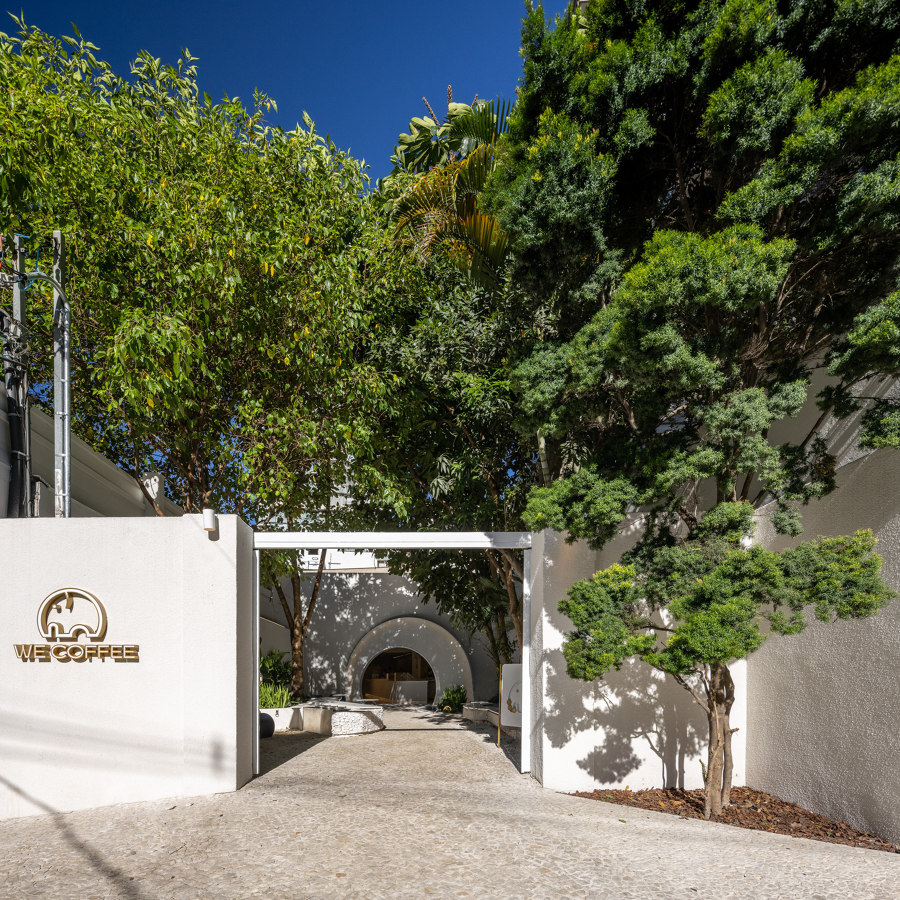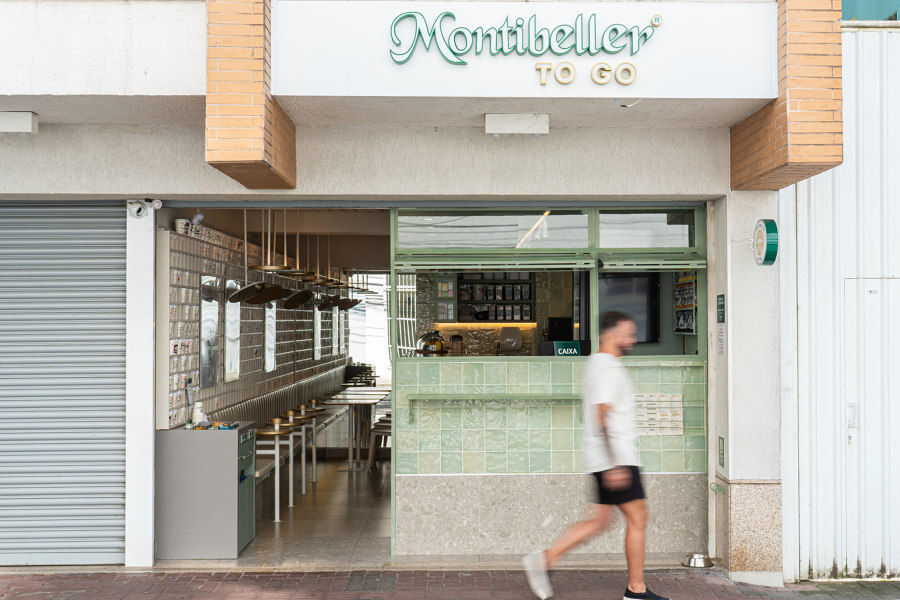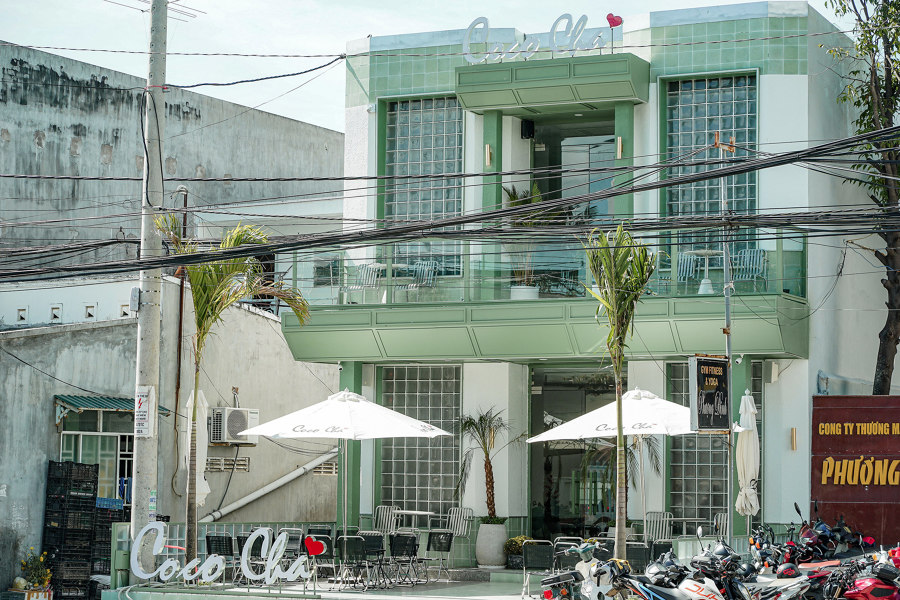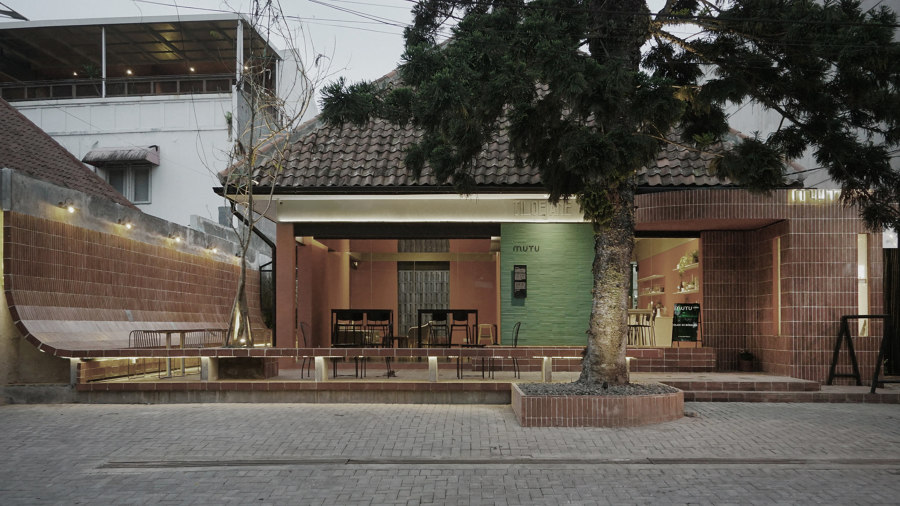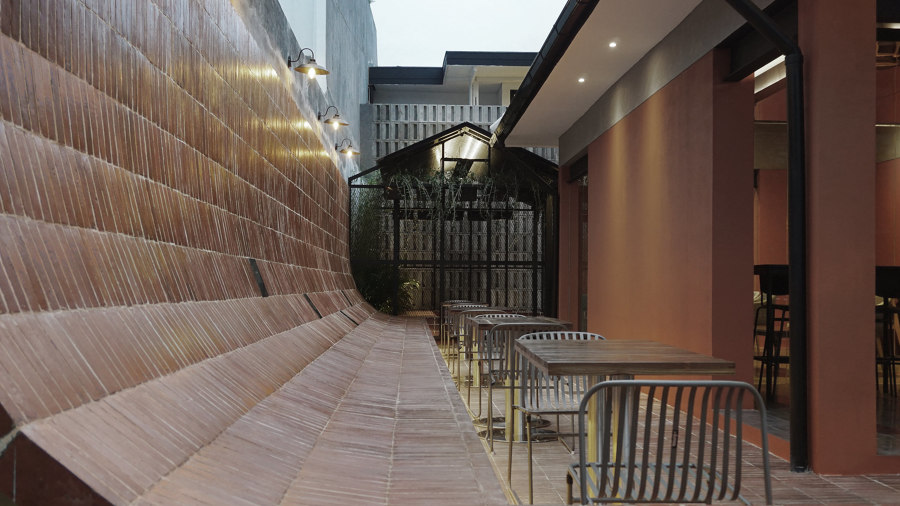Four bean-belt coffee shops that kick-start the day
Text by James Wormald
04.09.23
Shortening the bean-to-cup journey, these cafés and coffee shops in major coffee-growing nations awaken their customers by celebrating and enhancing the drinking experience.
Two skylights pour natural light into the deep, narrow and naturally dark plot of the CoCo Cha Taiwan Tea & Coffee café. Photo: Nguyen Day Hoach
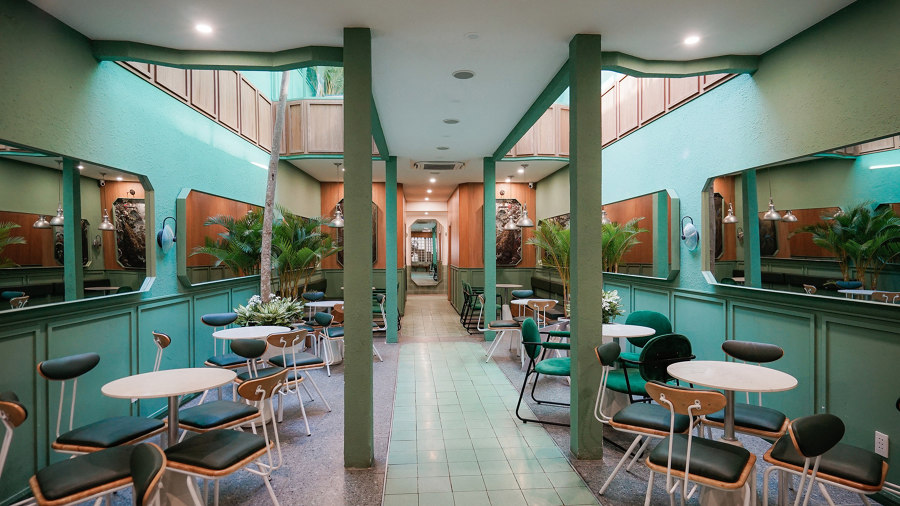
Two skylights pour natural light into the deep, narrow and naturally dark plot of the CoCo Cha Taiwan Tea & Coffee café. Photo: Nguyen Day Hoach
×At 23.5 degrees north and 23.5 degrees south of the equator respectively, sit the Tropics of Cancer and Capricorn. The 3,000-mile-wide band between them that wraps around the Earth is affectionately known as the ‘bean belt’. The tropical and sub-tropical climatic conditions inside the belt, as well as the high percentage of land over 1,000 metres above sea level, create the perfect conditions for the coffee plant to thrive.
Interiors of home-grown coffee shops can be just as rich and well-balanced as their coffee beans
In these regions across Central and South America, Africa and Asia, coffee is one of the main national exports, becoming a large part of many national identities. So the interiors of the countries’ home-grown coffee shops can be just as rich and well-balanced as the coffee beans they grow. For people living in the bean belt, coffee is more than just a drink, it’s literally a life source. And at these coffee shops, it’s treated as such.
In the calming neutral tones of a spa, We Coffee positions the drink as a wellness product. The white palette also serves to highlight the edible colours of the café’s pastry menu. Photos: Manuel Sá
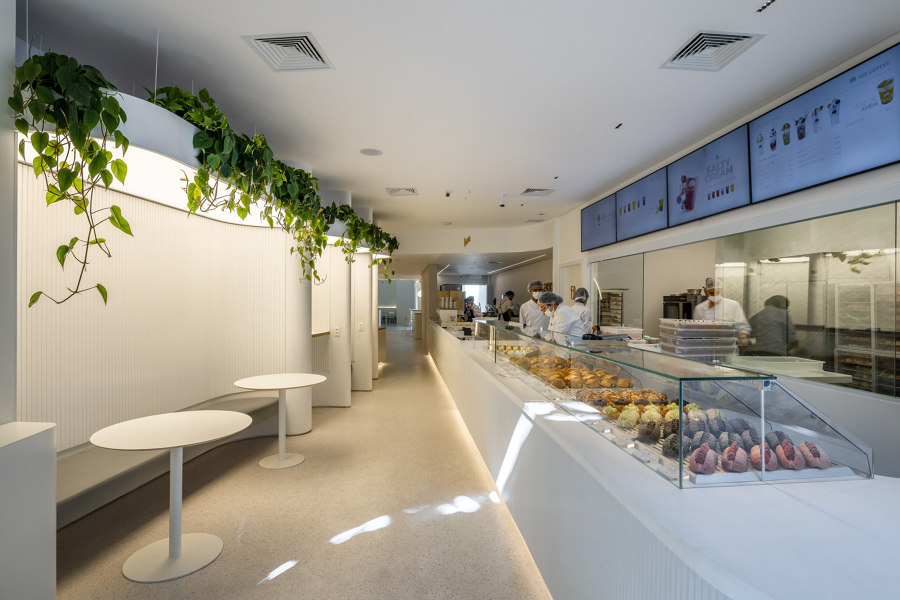
In the calming neutral tones of a spa, We Coffee positions the drink as a wellness product. The white palette also serves to highlight the edible colours of the café’s pastry menu. Photos: Manuel Sá
×We Coffee – Vila Nova Conceição in São Paulo, Brazil, by Pitá Arquitetura
Highly caffeinated, coffee is seen as a little bit of a guilty pleasure. And it’s arguably true – coffee is a drink that, with regular high-level consumption, can cause both physical and mental health problems. Many consumers, however, even coffee drinkers themselves, forget that it can also be good for you, reducing the likelihood of Alzheimers, heart disease, liver disease, Parkinson’s disease, strokes, diabetes and cancer.
The We Coffee – Vila Nova Conceição in São Paulo, however, is a coffee shop that’s designed like a destination spa, where coffee and the experience of drinking it is the relaxation treatment of choice. By setting back its arched entranceway – mimicking the brand’s logo and welcoming the customer in with its curved form – the project architects Pitá Arquitetura were able to invite the exterior into the coffee shop’s interior, referring to its design as ‘an extension of the urban oasis of the park.’
Montibeller Coffee Shop serves its customers quickly and efficiently with dedicated sidewalk service, but also celebrates their love for the drink with a wall of coffee-cup doodles. Photos: Romario Couto dos Santos
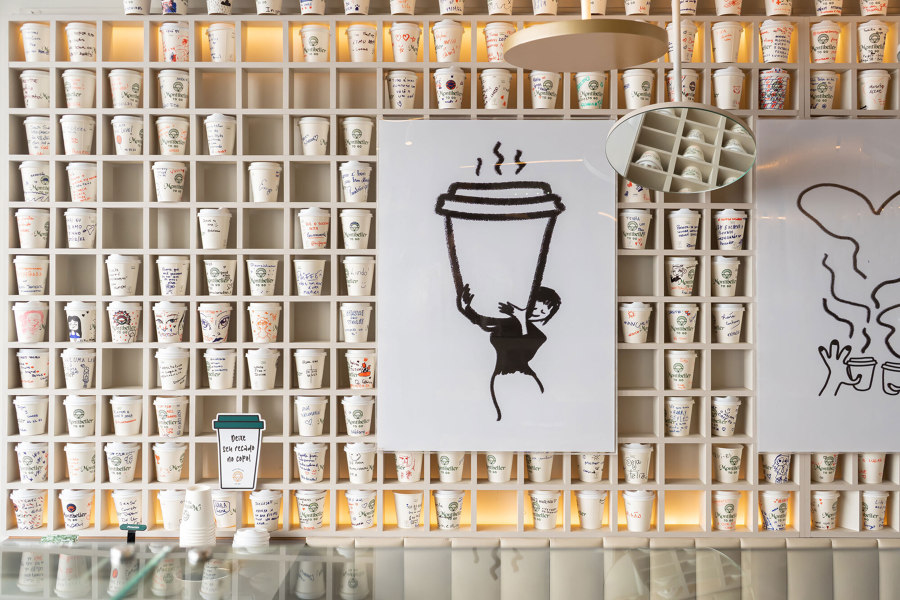
Montibeller Coffee Shop serves its customers quickly and efficiently with dedicated sidewalk service, but also celebrates their love for the drink with a wall of coffee-cup doodles. Photos: Romario Couto dos Santos
×Montibeller Coffee Shop in Itajaí, Brazil, by Térreo Arquitetos
Brazil is the world’s biggest single exporter of coffee beans, accounting for one-third of the global total. But not all of the nation’s beans leave its shores, of course. The drink is so ingrained in daily Brazilian life, in fact, that in some restaurants it’s complimentarily served for free like tap water. Even as the coffee preferences of the modern Brazilian on the street get more personalised, this casual relationship with the drink means that a speedy service is still very much expected.
In some Brazilian restaurants, coffee is served for free like tap water
The Montibeller Coffee Shop in Itajaí, as its architects Térreo Arquitetos explain, ‘opens onto the street where sidewalk service is provided directly to the hustle and bustle of everyday life.’ Meaning customers who are particular about their coffee, but still don’t want to wait for it, don’t need to. Those who do choose to sit and drink onsite, meanwhile, are treated to an ‘interactive gallery wall of doodled coffee cups running the entire depth of the interior,’ highlighting the joyful pleasure the drink provides.
Biophilic palettes set a strong tone for the colour, artwork and interior decor of the CoCo Cha Taiwan Tea & Coffee café in Thành Phố Phan Rang. Photos: Nguyen Day Hoach
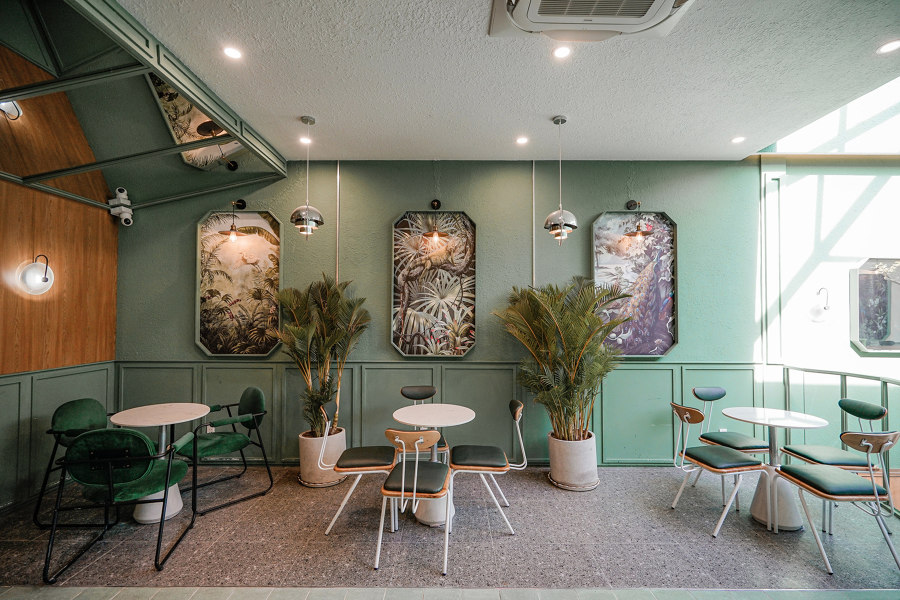
Biophilic palettes set a strong tone for the colour, artwork and interior decor of the CoCo Cha Taiwan Tea & Coffee café in Thành Phố Phan Rang. Photos: Nguyen Day Hoach
×CoCo Cha Taiwan Tea & Coffee in Thành Pho Phan Rang – Tháp Chàm, Vietnam, by PT Arch Studio
With the distinctively extreme levels of sunshine and rainfall of Vietnam’s climate giving its coffee beans their original flavour, it’s little surprise the country is the world’s recon-largest exporter of the commodity. CoCo Cha Taiwan Tea & Coffee’s deep and narrow plot, however, was causing a problem the coffee shop’s beans were not used to – a lack of natural light.
‘The weakness of the construction site is that the width is too small, and the length is too deep,’ explain project architects PT Arch Studio. In order to counter this, glass bricks make up an art deco facade that serves the front seating zone with light, while two skylights in the centre of the floor plan allow light to pour through them, into a glass-edged atrium stairwell and first-floor openings that allow tall trees to live between them.
Green is chosen as a complementary colour for the Mutu Loka Café’s earthy exposed brickwork, itself used to form bench seating in the coffee shop. Photos: Aaksen Responsible Aarchitecture
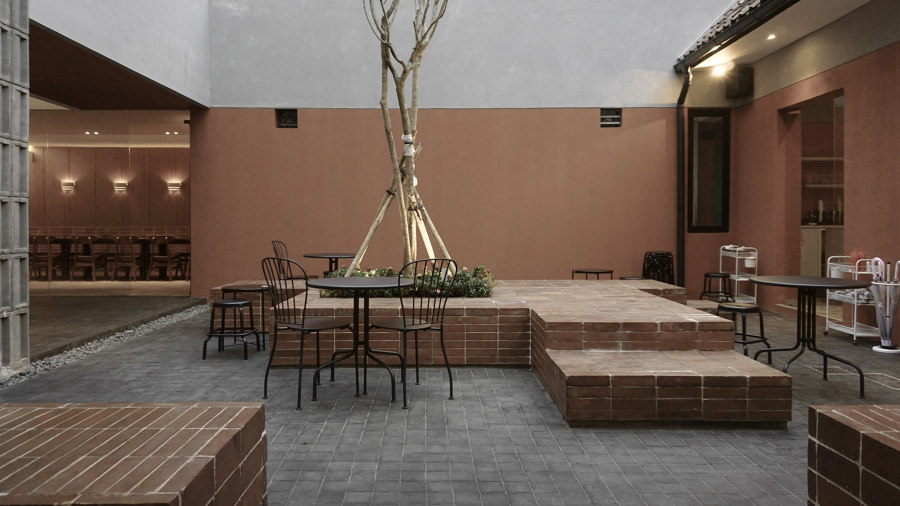
Green is chosen as a complementary colour for the Mutu Loka Café’s earthy exposed brickwork, itself used to form bench seating in the coffee shop. Photos: Aaksen Responsible Aarchitecture
×Mutu Loka Café in Bandung, Indonesia, by Aaksen Responsible Aarchitecture
Another top coffee-producing nation – the Indonesian island Java actually lends its name to a commonly used moniker for the drink – Indonesian coffee has a distinct, earthy flavour. At the Mutu Loka Café in Bandung, Aaksen Responsible Aarchitecture brought this earthy flavour to the project’s material palette. Tasked with creating a period of stability for a structure that’s seen a lot of change in its time – with ‘building masses spread organically, creating disorganised layout functions,’ describe the architects, ‘the beauty of the original buildings remained unseen,’ – they arranged to expose and reconstruct the destructed elements.
The architects brought Indonesia’s earthy flavour to the project’s material palett
This theme of ‘reconstructing the destructed’ emerged from the studio’s ‘decision to demolish ineffective additional parts and restore the original building,’ as they explain. And allowed them to, for example, ‘create a focal point around the outdoor dining area’ by exposing the deconstructed bricks in a slanted fort wall and forming an ergonomically curved seat for users.
© Architonic
Head to the Architonic Magazine for more insights on the latest products, trends and practices in architecture and design.



